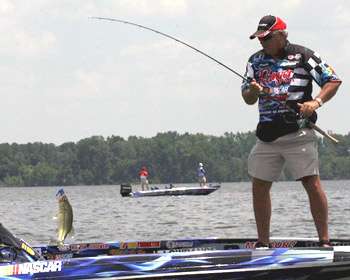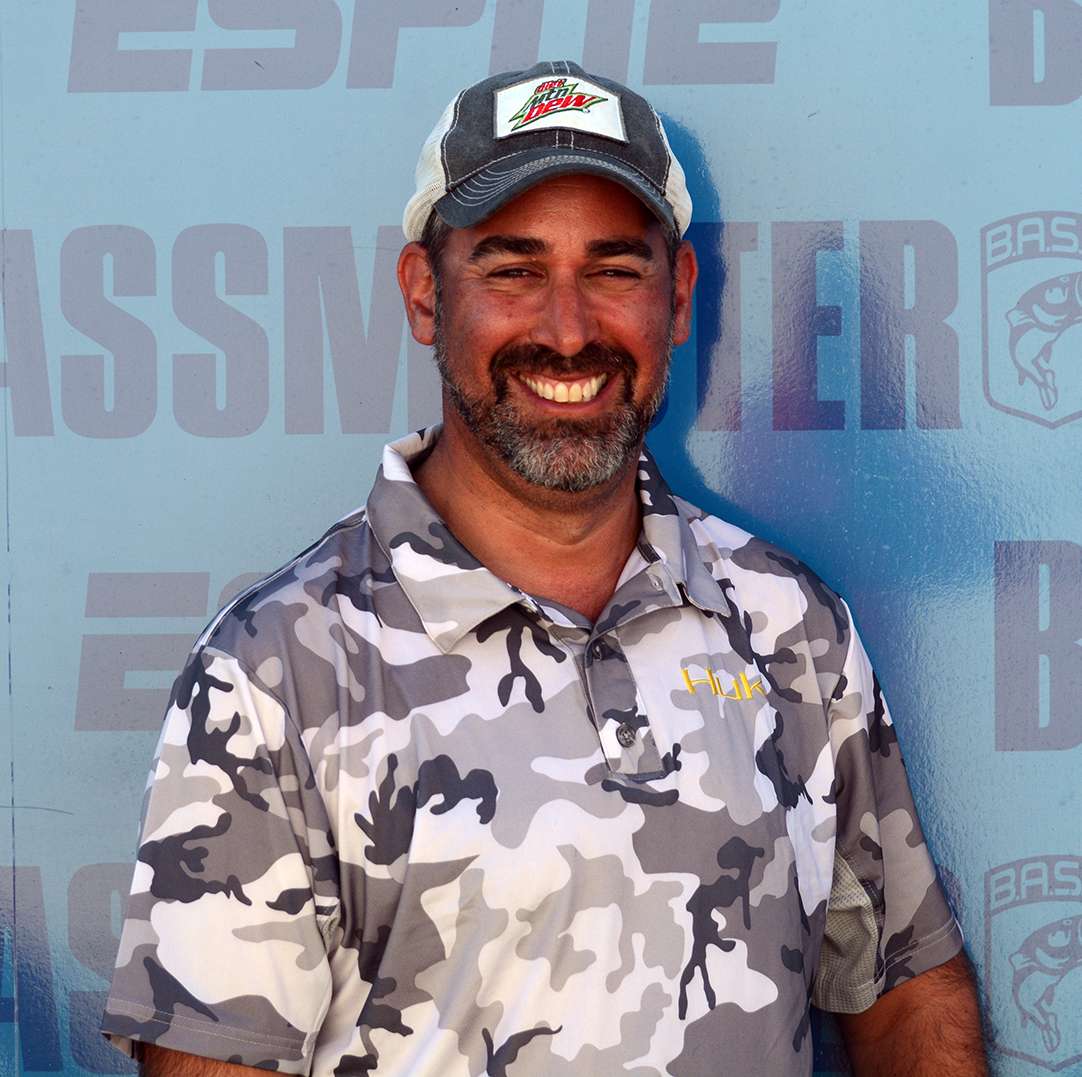
In Tommy Biffle's mind, the rules of math that apply to the rest of the world are not necessarily in effect. The veteran Oklahoma pro says that a lot of times, he'd much prefer to catch just five bass instead of 10, 20 or even 100.
This makes a bit more sense when you remember that Biffle is a bass pro who can only weigh in five fish a day. If he catches five 4-pounders, that's worth a lot more in his checking account than a dozens of 2-pounders. The decision as to whether to shoot for numbers or gamble on a few key bites is one that he often has to make while on the Bassmaster Elite Series trail, and it's particularly important on waters that contain both largemouth and smallmouth bass.
Now that the Elite Series has visited New York's dual-species wonderland of Oneida Lake for three years straight, it's generally accepted that it takes at least some largemouth in your creel there to win. But it wasn't that well known until Biffle opened the locals' eyes with a four-day catch that weighed 63-10 in 2006. He never weighed in a brown bass all week. "In this lake in particular, it all depends on whether you want to win or just place in the money," he says in regards to Oneida.
"You can go out there and catch a hundred smallmouth, and you're probably not going to win the tournament. But if you focus on largemouth exclusively, you might catch a 15-, 18- or 20-pound limit out here." The first step in deciding which species of bass to chase is to determine whether decent populations of both kinds exist.
"Other than Buffalo (Lake Erie), there's probably always enough largemouth to last through all four days, even when the smallmouth fishing is so good," Biffle says. He's predisposed to think that way, largely because of the way he likes to fish — with a flipping rod in his hand and heavy line tied to a jig or meaty soft plastic. "If at all possible, I'm going to fish for largemouth," he says.
He encourages other anglers, both tournament pros and weekend warriors, to think the same way. "Fish what you're comfortable with. If you like flipping or pitching like I do, then go for largemouth. If you're comfortable fishing out deep, go for smallmouth." He doesn't feel the same comfort level with smallmouth. A perfect example of why that is the case happened at this year's Empire Chase tournament on Lake Erie.
He found what he thought was a quality school of smallies during practice, but when the tournament began, they were nowhere to be found. "Every time I target the smallmouth they end up moving on me," he complains. Despite his largemouth leanings, he said that there are times when it's clear that smallmouth are the key to victory and then he'll pursue them like everyone else.
He encourages anglers to practice with an open mind in order to objectively determine the quality of the respective fisheries as well as the body of water as a whole. There's no rule that says you can't spend portions of your day targeting multiple species of bass. Indeed, it's sometimes possible to develop a morning-afternoon strategy that flip-flops that pursuit.
Even when you're on a smallmouth bite, there's no reason not to "try for a few largemouth along with them," Biffle says.
(Provided by Z3 Media)





